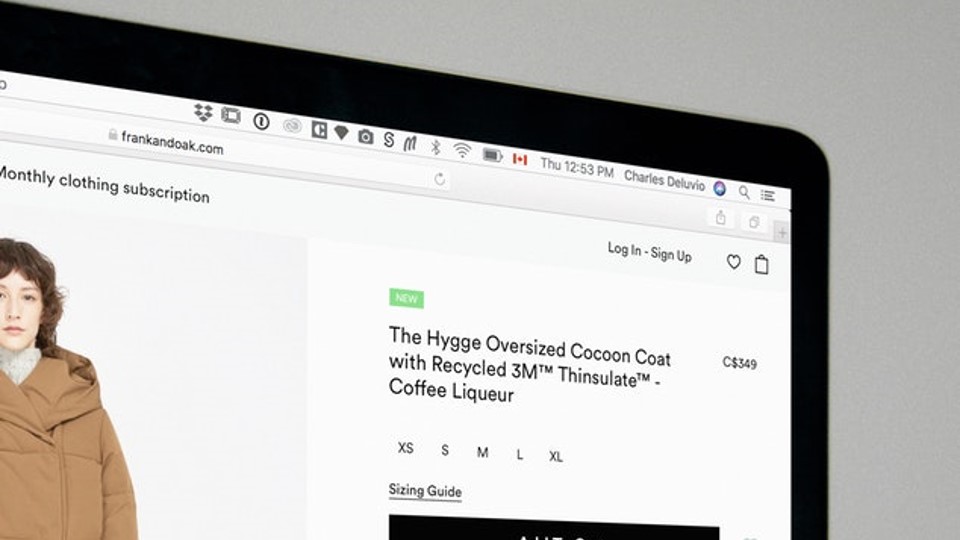
It is well-known that the number of high street stores is declining. This is being largely driven by a switch to more online shopping. Behavioural economics has been a key part of this movement. Marketers and researchers need to better understand how behavioural economics has been used in this context. More specifically, we need to understand how behavioural economics is used to optimise the ‘online retail experience’ and what opportunities and barriers this creates for researchers.
how is behavioural economics used to optimise the online retail experience?
- create a risk-free consumer experience
When a store is moved online it removes human interaction from the consumer experience. To compensate for this, online retailers utilise what is called the Loss Aversion Effect. This is a process whereby people tend to prefer to avoid losses rather than make gains. This is seen in retailer promises such as Amazon’s Prime ‘30-day free trial’ and Asda’s “100 days Satisfaction Guarantee”. These offers remove the risk of uncertainty and allow the consumer to change their mind later. These contribute to making online retailer appear a risk-free environment for consumers.
- understand the consumer’s mood
Purchase preferences are not entirely rational and understanding the consumer’s emotional mood identifies the messaging that would best appeal to the consumer. However, without human interactions how is one to assess the mood of the consumer? A study conducted by Jeff Jenkins at Brigham Young University found that mouse movement behaviour where more jagged and sudden indicated a bad mood. Another study by Professor Keith Wilcox, at Columbia Business School, found consumers are more engaged when the stimulus is reflective with their mood.
Like custom recommendation systems, changing the site’s tone and the products shown based on the consumer’s mood via measuring online behavioural metrics can identify the ‘shoppers in a hurry’ to the ‘heavy browsers’.
- offer great value while maximising consumer spend
The price that consumers are willing-to-pay is relative to the prices they are comparing.A study conducted by Dan Ariely looked at how “Dummy Products” influenced consumer choice. Ariely looked at subscription pricing options for The Economist Magazine. Two studies were conducted:
The first study gave 3 subscription options: Print only at $59, Web only at $125 and Print and Web combined at $125.
The second study gave 2 subscription options: Print only at $59 and Print and Web combined at $125.
In the first study, out of 100 MIT students tested 84% choose the Print and Web combined subscription and 16% choose Print only option. No one choose the Web only subscription option.
However, in study ‘B’ – when the Web only subscription option is removed – the Web and Print combined subscription option decreased from 84% to 32% and the Print only subscription option increased from 16% to 68%. While no one choose the Web only subscription option, it’s added a point of reference in aiding consumers choice.
This example shows how dummy products build context and the belief that value exists. Online stores have an unlimited shelve-space, so they can use as many dummy products as possible to generate as many value perceptions.
what opportunities and barriers does this generate for researchers?
The use of behavioural economics in this context creates both opportunities and barriers for researchers. Firstly, it provides avenues to a new wave of retail environment research. Within this, long gone are the days of shop-a-longs – the opportunity to better digitise retail environment research exists. Secondly, behavioural economics is fundamentally evidence-based policy. This means the ideas generated by behavioural economics will need testing – and the value of behavioural nudges will require validation. Within this, we will need to become more adept at conducting experiments such as that outlined by Dan Ariely.
However, these opportunities don’t come without difficulty. Many of the biases capitalised on by behavioural economics are complex to tackle on a purely rational level. This is largely because consumers are unaware they are being influenced by them.
So here are three behavioural economics approaches researchers can put into practice to help marketers improve how they leverage behavioural economics in an online environment:
measure the unconscious
Measuring mouse movements and keyword search terms used could provide valuable insight into consumer’s mood. Mouse movement or the use of exact or broad keywords can indicate whether the consumers is browsing or looking for a quick purchase. Such details allow the tailoring of different product contexts to be shown to consumers to either promote specific behaviours
control the proposition context
Don’t just test prices or products. It is equally vital to test the context in which they are place such as: against different competitors, supported by different copy and alternative promotional messages. Getting the context optimised can easily be the difference between making a sale or missing out
test risk and rewards
Classical concept research measures areas such as appeal and purchase intent. The new wave of behavioural economics-based marketing means we need to test loss aversion and guarantee promise. Instead of asking consumers if a product appeals, we now need to ask them if an offer puts them at risk or enforces a comfort within a purchase environment
Online retail is here to stay. Behavioural economics is on the ascent. The two seemingly combine to generate success for marketers. This means we as researchers need to understand how behavioural economics is being applied by our marketing colleagues. We then need support them by providing an understanding of how their behavioural nudges are working and evidence over which of them to apply.
This post was originally published on Quirk’s Media.
By Shamvir Singh, Associate Director of Innovation & Analytics
if you would like further information, please get in touch via:
ssingh@northstarpresents-volvo.com




